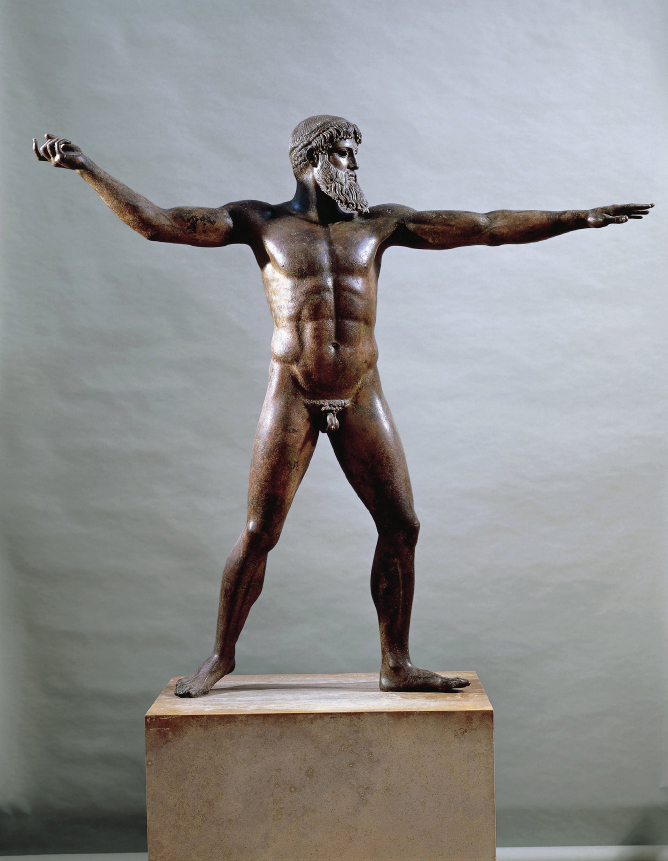VIEWPOINTS
| 5-4 | | A Hellenic Depiction of Physical Perfection |
| Zeus from Artemisium (ca. 460 B.C.E.) |
This bronze statue was discovered in a shipwreck off the coast of the Greek island Euboea. Bronze statues from antiquity are rare because they were normally melted down for their precious metal. This statue stands almost seven feet tall and is thought to represent Zeus. The statue probably originally held a thunderbolt in its right hand and is in position to strike. Ancient Greek statues are often figures in complete nudity, reflecting the Greeks’ comfort with the nude human form. For example, participants in athletic competitions never wore clothes.

DEA/G. Nimatallah/De Agostini/Getty Images.
READING AND DISCUSSION QUESTIONS
- Describe the position of the figure’s arms, legs, and head. How would you explain the artist’s choices in this regard?
- What should we make of the fact that Zeus is depicted as a perfect human? What does this statue tell us about how the Greeks saw their gods?